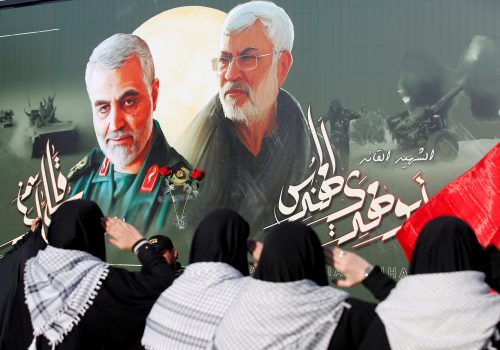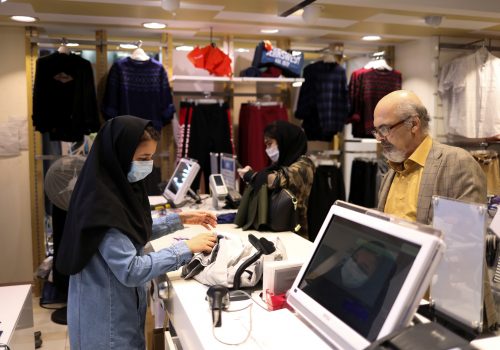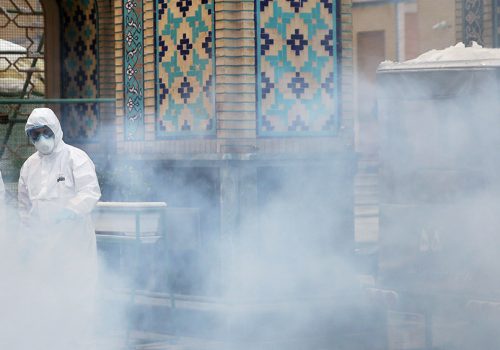The rise and fall of the ‘crocodile ayatollah’
Since 1979, there has been a constant debate in the Islamic Republic between the Iranian reformists, who emphasize the republican component of governance reflecting the people’s sovereignty, and the hardliners, who seek to emphasize the Islamic component reflecting God’s sovereignty. With the death of Ayatollah Mohammad Taqi Mesbah-Yazdi, hardliners lost their most outspoken representative.
Mesbah-Yazdi was considered the most prominent representative of the group inside the conservative-religious establishment that completely rejects democratic discourse. In Islam, Mesbah-Yazdi reportedly said that man has no right to think in any way he wants about anything. Divine laws govern all human acts and deeds. “It doesn’t matter what the people think. The people are ignorant sheep,” he once noted.
Born in Yazd in 1935, in recent decades Mesbah-Yazdi was considered the godfather of Iranian hardliners and a clear representative of the Velayat-e Faqih, which sees the Supreme Leader as infallible and not subject to elected institutions. Anyone who dares to oppose the Supreme Leader’s authority deserved, in his view, capital punishment.
Mesbah-Yazdi was known by his critics as the “crocodile ayatollah” (Ayatollah Temsah). This nickname was born out of a cartoon published in 2000 by Iranian cartoonist Nik Kowsar, who portrayed the high-ranking cleric as a crocodile strangling a journalist with his tail in response to a speech given by the cleric against freedom of expression. Ironically, if not surprisingly, Kowsar was briefly imprisoned for that depiction shortly after it was published.
Mesbah-Yazdi was one of the founders of Haqqani College in 1964 in the city of Qom. In the aftermath of the Islamic revolution, the combined training of modern-educated clerics enabled its graduates to fill various government and administrative positions. Scores of his former pupils found their way to high-ranking positions within the regime. At certain times, Mesbah-Yazdi was reported to be a member of the secretive Hojjatiyeh Society, which promoted the hastening of the Hidden Imam’s return, a claim that he denied.
Mesbah-Yazdi’s political influence grew following the election of Mahmoud Ahmadinejad in 2005. The conservative cleric was considered Ahmadinejad’s spiritual mentor and staunch supporter. The political crisis, which erupted in Iran after the 2009 presidential election, was exploited by the hardline cleric to fortify his status.
Over the next several years, Mesbah-Yazdi intensified his attacks on reformists and stressed his support for Supreme Leader Ayatollah Ali Khamenei. In a 2010 lecture to senior Islamic Revolutionary Guards Corps (IRGC) officials, he linked reformists with “the Jews and Zionists.” He also accused reformists of being proxies of the US, saying that instead of chanting “death to America,” they wanted to sell oil to the US.
At the height of his power, Mesbah-Yazdi has been considered a possible successor to Khamenei. However, in 2011,when Ahmadinejad fell out with the Supreme Leader due to political and ideological disputes, Mesbah-Yazdi was forced to recant his support for the second-term president. Instead, he began to criticize Ahmadinejad and his associates, who had been labeled by Khamenei’s supporters as “the deviant current” for their support of messianic and anti-clerical ideas, accusing them of endangering Islam, the regime, and the achievements of the Islamic revolution.
In 2012, before the parliamentary election that year, Mesbah-Yazdi orchestrated the establishment of the Steadfast Front (Jebhe-ye Paydari), affiliated with the radical right of the conservative camp. The faction managed to record substantial achievements in the election and secured several dozen spots in the new parliament (nineth session). However, the legislative branch remained in control of the centrist faction of the conservative camp, who ran under the umbrella of the United Principlist Front (Jebhe-ye Mottahed-e Osulgarayan).
Mesbah-Yazdi’s growing political involvement, his initial support for Ahmadinejad, and his alignment with the Steadfast Front resulted in growing criticism of the hardliners among conservative politicians and clerics. As the 2012 parliamentary elections approached, disagreements arose between Mesbah-Yazdi and the religious establishment. He ignored pleas from some of the country’s most influential clerics to form a united conservative political front and instead ran his own ultra-conservative candidates.
In 2013, a group of clerical students from the religious seminary in Qom released a public letter sent to Mesbah-Yazdi criticizing his political conduct. They expressed their reservations about his support for Ahmadinejad and the Steadfast Front and called on him to withdraw from political affairs.
During the 2013 presidential election, Mesbah-Yazdi was pressured by hardline clerics to withdraw his support for his preferred candidate, Kamran Bagheri Lankarani. When he refused, Bagheri Lankarani withdrew his candidacy to back Saeed Jalili, secretary of the Supreme National Security Council. Following Hassan Rouhani’s victory in the 2013 presidential election, accusations were exchanged among the conservatives regarding the party responsible for their political failure. These recriminations resulted in fingers being pointed at Mesbah-Yazdi.
Jomhuri-ye Eslami, adaily, published a particularly scathing editorial which made an unprecedented personal attack on the senior cleric. It accused Mesbah-Yazdi of extremism and argued that his conduct and statements had exacerbated divisions in Iranian society in recent years. The newspaper even questioned his commitment to the 1980-1988 Iran-Iraq war, accusing him of neither sending his children nor students to the front line, not supporting the fighters, and not visiting the front even once to raise morale.
At that time, criticism of Mesbah-Yazdi also grew louder among the religious establishment. High-ranking cleric Mohammad Yazdi, chairman of the Society of Qom Seminary Teachers, blamed Mesbah-Yazdi for sowing divisions among senior clerics during the 2013 presidential campaign, which Mohammad claimed led to the conservatives’ defeat.
Years later, the 2016 Assembly of Experts elections highlighted the political decline of Mesbah-Yazdi, who lost his seat despite the fact that the Assembly remained under the full control of conservatives. However, his political influence had not completely waned by then. He was re-elected to the Assembly of Experts—held in parallel with the parliamentary elections in February 2020—after a four-year absence in the interim elections for the Assembly.
Following the deaths of Ali Akbar Hashemi Rafsanjani in 2017, Mahmoud Hashemi Shahroudi in 2018, and Mohammad Yazdi in 2020, Mesbah-Yazdi’s demise removes yet another senior cleric who was seen as a possible successor to Iran’s Supreme Leader. Since he was no longer considered a relevant candidate in recent years, Mesbah-Yazdi’s death does not affect the power struggle in Tehran for the post-Khamenei era. Yet, it has likely improved the position of younger clerics, including current judiciary chief Ebrahim Raisi. The hardline wing of Iran’s religious establishment has, nevertheless, lost one of its prominent figures at a time when the Supreme Leader is determined to ensure that control of the country’s main power centers is maintained by loyalists as his tenure winds down.
Dr. Raz Zimmt is a research fellow at the Institute for National Security Studies (INSS) specializing in Iran. He is also a veteran Iran-watcher in the Israeli Defense Forces. Follow him on Twitter: @RZimmt.
Image: Ayatollah Mohammad Taqi Mesbah-Yazdi via Wikimedia Commons


